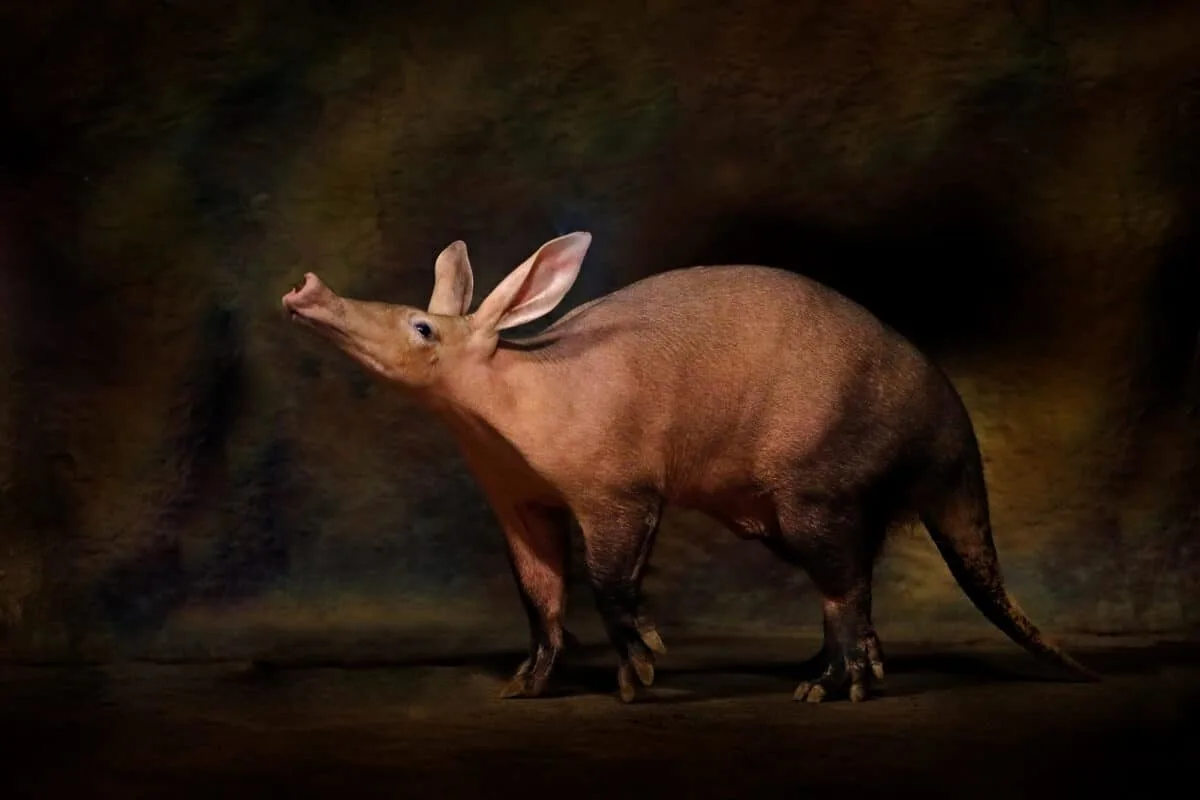Gorilla Vs. Aardvark – a comparison of two animals native to the African continent.
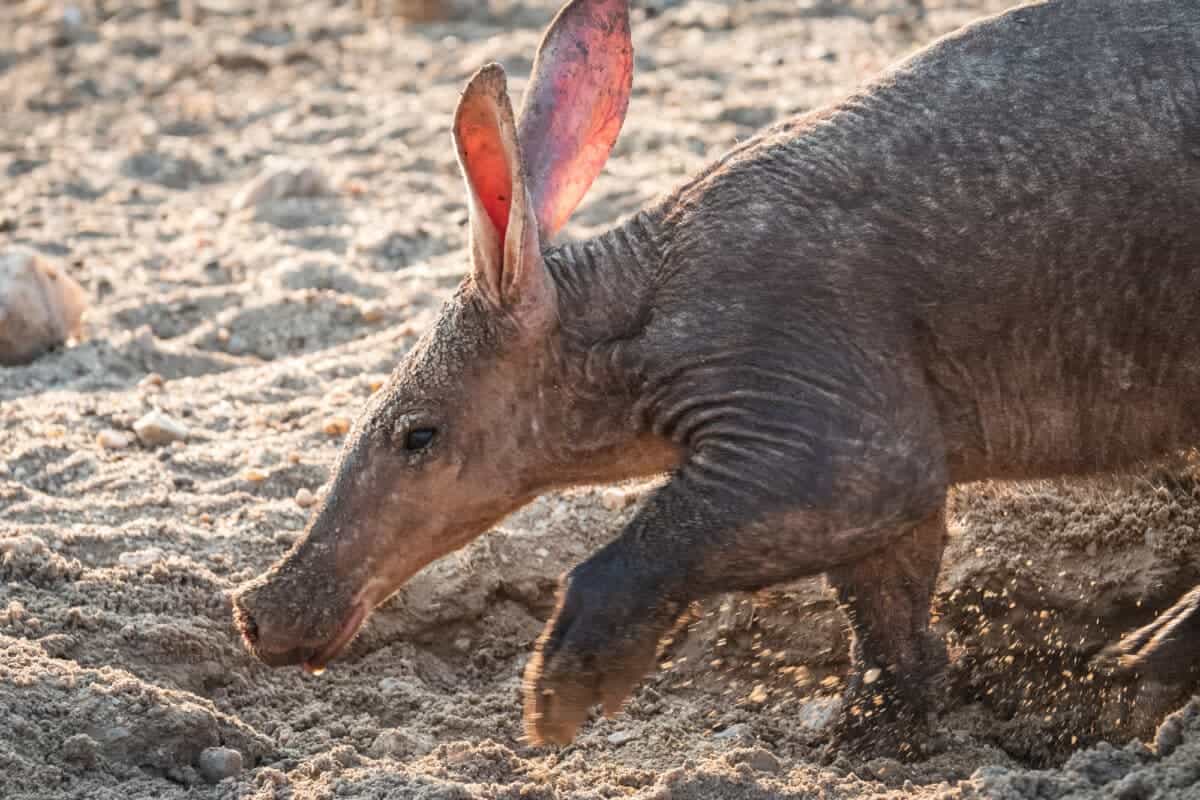
Welcome to an intriguing and informative exploration of the clash between two fascinating creatures: the Gorilla and the Aardvark. These animals may appear worlds apart in appearance and habitat. They both possess unique traits that set them apart as extraordinary beings in their own right.
In this discussion, we will look into the distinct characteristics of these remarkable creatures and embark on an entertaining and educational comparison between them.
The Gorilla is an iconic animal, the king of the jungle, many say, but I have a sweet spot for the adorable Aardvark and its unique snout.
Let’s uncover the secrets behind the Gorilla’s immense strength, intelligence, and social dynamics, as well as the Aardvark’s peculiar adaptations for survival and its role in shaping its environment. By examining their contrasting traits and features, we aim to shed light on the diversity and wonders of the animal kingdom.
Key Points
- Gorillas have muscular builds and black fur. Meanwhile, Aardvarks possess long snouts and slender bodies covered in coarse hair.
- Gorillas have adaptations for climbing and moving through dense vegetation, while aardvarks have specialized features like powerful claws for digging burrows.
- Gorillas exhibit incredible strength, being able to lift heavy weights, and Aardvarks have powerful limbs for digging extensive burrows.
- Gorillas shape their environment through their movements and feeding habits.
- Aardvarks contribute to soil redistribution and provide shelter for other animals in their burrows.
- The Gorilla is highly endangered, while the Aardvark is not deemed to be endangered at all – however, their habitat is facing threats, so it can be assumed that their population is facing threats too.
Comparison Table: Gorilla Vs. Aardvark
| Feature | Gorilla | Aardvark |
|---|---|---|
| Physical Appearance | Broad shoulders, muscular build, black fur | Long snout, slender body, coarse brown hair |
| Size | Up to 6 feet tall, up to 400 pounds | Up to 4 feet long, up to 130 pounds |
| Unique Adaptations | Elongated arms, strong hands, nest building | Powerful claws for digging, sticky tongue |
| Strength and Intelligence | Immense strength, problem-solving skills | Specialized teeth for crushing prey, acute hearing |
| Social Behavior | Primarily solitary, with minimal social interaction | Primarily solitary, minimal social interaction |
| Habitat | Dense forests, swamps, and mountains | Various habitats, from savannas to deserts |
| Diet | Primarily herbivorous | Insectivorous, feeds on ants and termites |
| Conservation Status | Endangered, facing habitat loss and poaching | Not endangered but habitat under threat |
Gorilla: The Mighty Primate
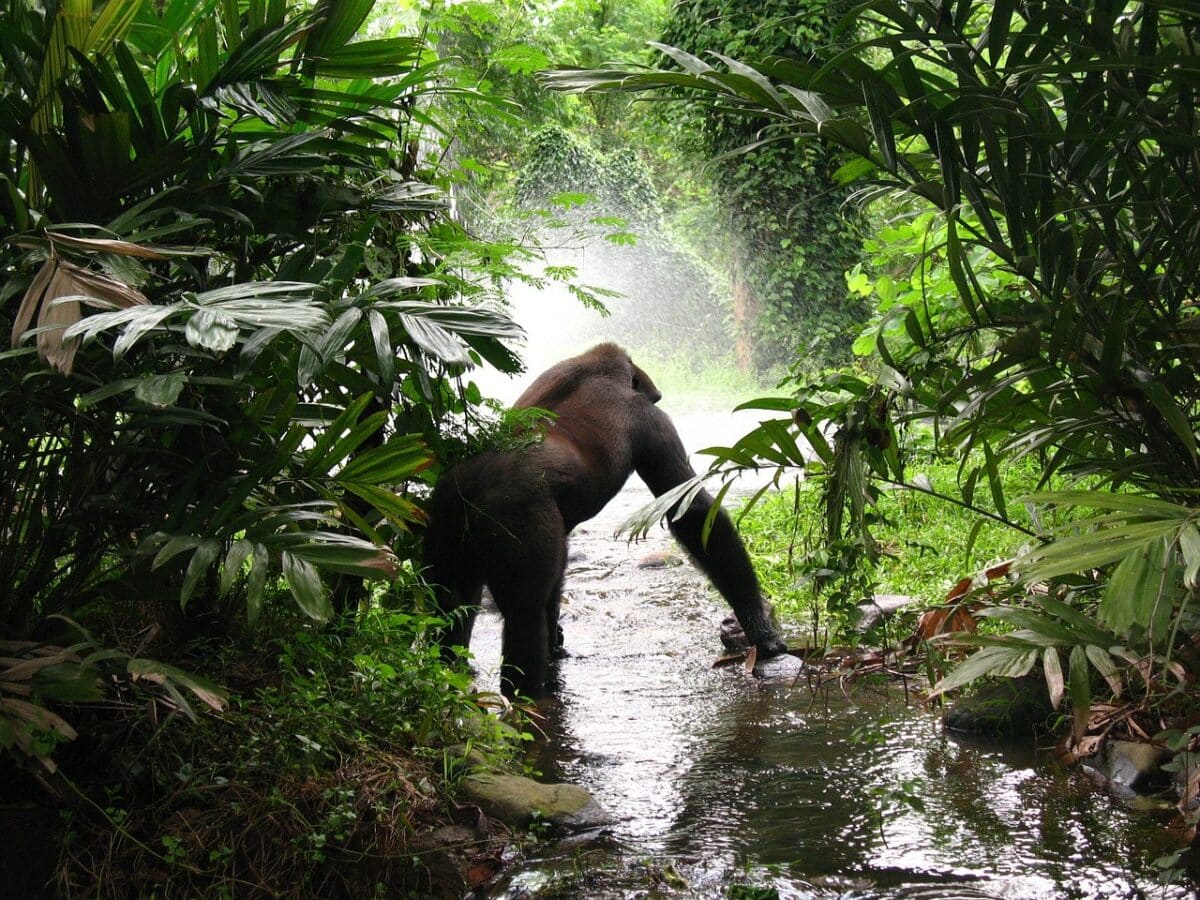
Physical Appearance
One look at a gorilla, and it’s clear that this is no ordinary primate. With its broad shoulders, muscular build, and distinctive black fur, the Gorilla is an imposing and majestic creature. Male gorillas are significantly larger than their female counterparts, often weighing up to 400 pounds and standing up to 6 feet tall.
Their massive size is complemented by their elongated arms, which can stretch up to 7 feet, and with their strong hands, they are capable of performing various intricate tasks.
Unique Traits and Adaptations
Despite their size, gorillas possess unique traits and adaptations that enable them to thrive in their natural environment. For example, their large size allows them to easily navigate dense forests, while their strong hands are especially adept at grasping and manipulating objects.
Additionally, gorillas have a remarkable degree of talent, which they use to construct elaborate nests from twigs and leaves, either on the ground or high up in the trees.
Strength and Intelligence
One of the most noteworthy aspects of the Gorilla is its incredible strength. A full-grown gorilla can lift up to 10 times its body weight, making it one of the strongest animals in the world. The Gorilla’s impressive intelligence complements this immense physical power.
These primates can communicate with one another through a complex system of vocalizations and gestures. Likewise, they can employ a range of problem-solving strategies – much like humans.
Social Dynamics and Communication
Gorillas are highly social animals and live in groups, known as troops, that can include up to 30 individuals. Within these troops is a well-defined social hierarchy, with the largest and strongest males serving as the leaders.
Communication plays a vital role in maintaining these social dynamics, and gorillas employ diverse sounds, facial expressions, and body postures to convey their feelings and intentions.
See how the Gorilla compares to the hare.
Aardvark: The Mysterious Burrower
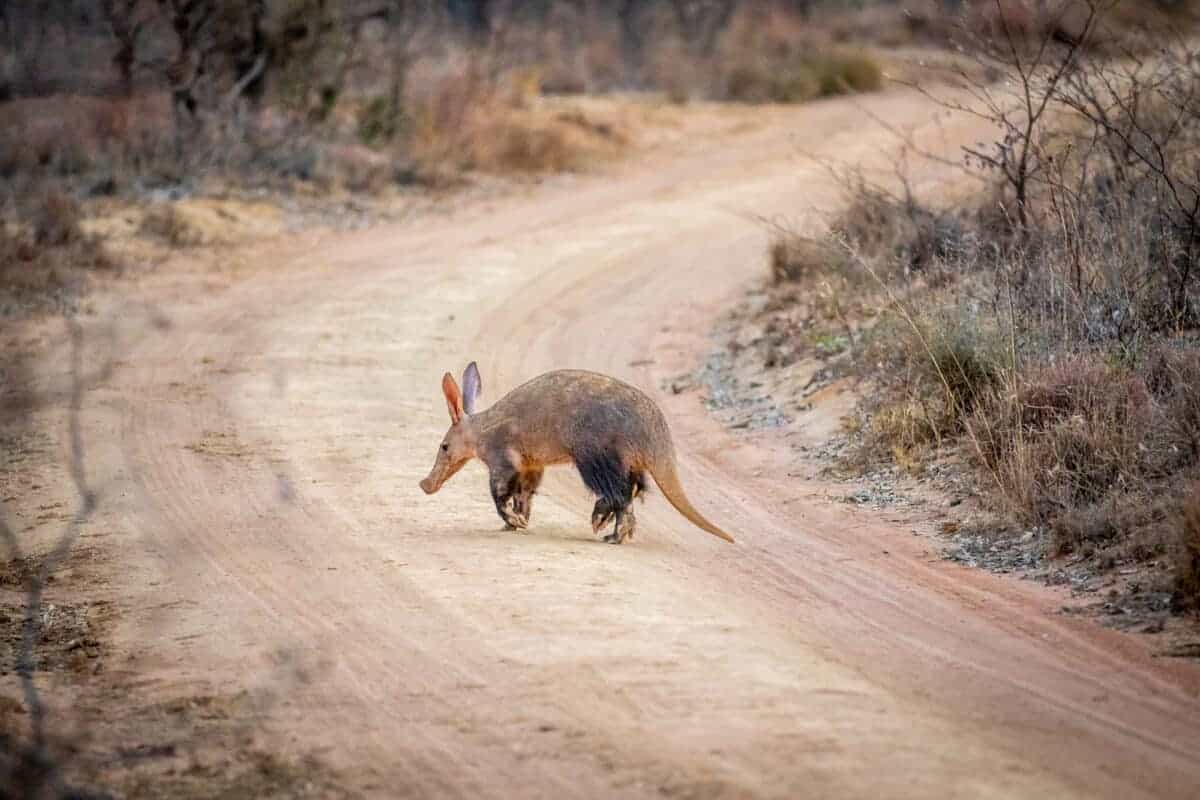
Physical Appearance
The Aardvark, also known as the “earth pig,” is a peculiar-looking creature with a long, pig-like snout, tapering ears, and a slender body covered with coarse, brown hair. Its limbs are stout and powerful, perfect for digging into the ground. The Aardvark can grow just over 4 feet long and weigh up to 130 pounds.
Unique Traits and Adaptations
One of the fascinating traits of the Aardvark is its ability to use its incredibly formidable claws to dig burrows in the ground, which can be up to 10 feet deep! These burrows serve as shelters against predators and provide a safe space for the animal to raise offspring.
Furthermore, the Aardvark also has a specialized tongue that can be up to 12 inches long and is covered in sticky saliva, which makes it easier for the animal to grab and munch on termites and ants.
Role In Shaping Its Environment
Believe it or not, the Aardvark plays a significant role in shaping its environment. By digging through soil and moving it around with its powerful limbs, the Aardvark can help redistribute nutrients and make it easier for plants to grow. The burrows that the aardvarks create provide homes for other smaller animals, such as snakes and lizards.
Diet and Hunting Techniques
Aardvarks are primarily nocturnal and have a diet of ants and termites. The Aardvark uses a powerful sense of smell and acute hearing to locate its prey. Once the Aardvark has located its target, its long, sticky tongue will capture its prey before crunching it up with its powerful jaws.
Read our comparison of two other African animals – the elephant and the lion.
A Comparison of the Gorilla and Aardvark
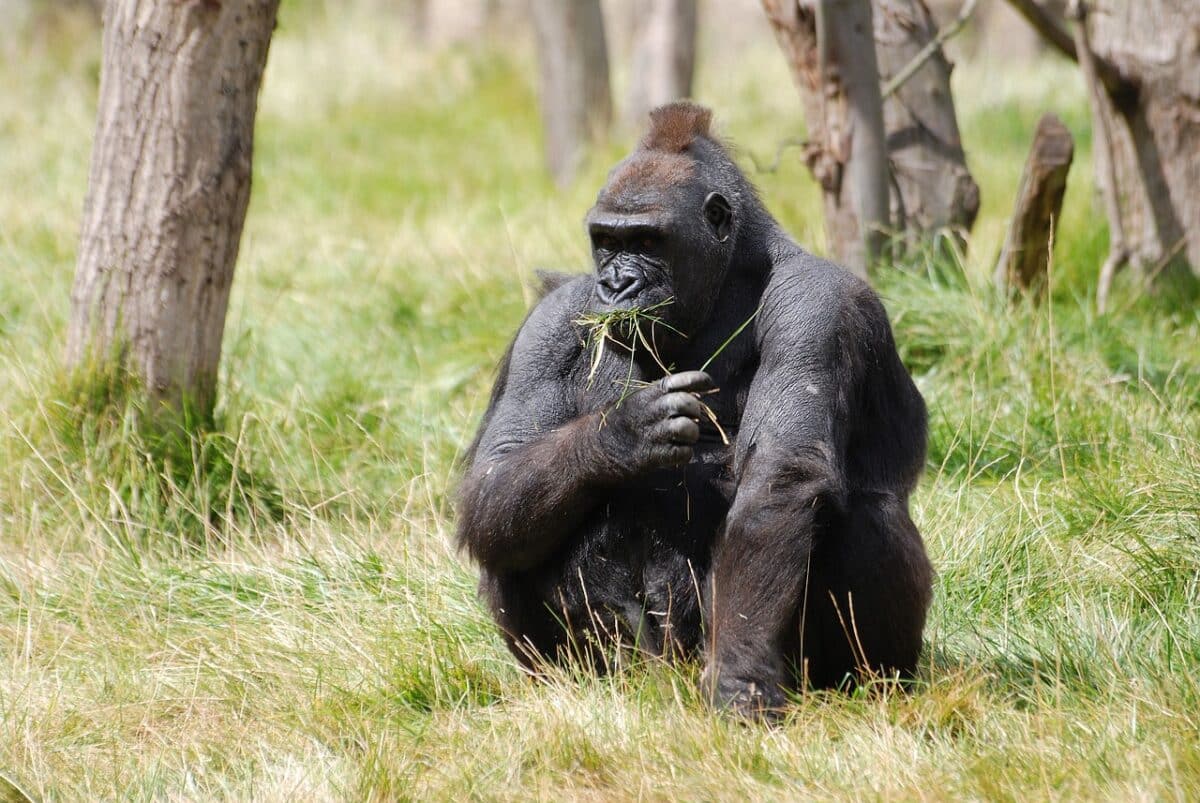
Gorilla Vs. Aardvark: Habitat And Distribution
Gorillas primarily reside in central and eastern Africa’s dense forests, swamps, and mountains. On the other hand, Aardvarks inhabit much drier parts of the continent. They can be found in various habitats across sub-Saharan Africa, from savannas to arid deserts. Their habitats greatly influence their physical and behavioral adaptations.
Gorilla Vs. Aardvark: Social Behavior
Gorillas are known for their intelligence and intricate social dynamics. They can use tools and display an understanding of cause and effect. Gorillas also have a unique familial structure within their groups, headed by a dominant silverback male, that involves nurturing relationships and protecting their young.
Aardvarks, also known as Orycteropus afer, are solitary animals that exhibit minimal social behavior. They prefer to spend their time alone, with each individual constructing and inhabiting its own burrow. It is only occasionally that they form loose social groups or colonies, sharing their burrows with other aardvarks.
Gorilla Vs. Aardvark: Means of Defences
The robust and muscular bodies of Gorillas, with broad chests and strong limbs, enable them to navigate their natural habitats with ease. They exhibit impressive strength for tasks such as climbing trees, breaking vegetation, and defending against threats.
Gorillas also possess long, dexterous arms that aid in movement through the forest canopy and allow them to forage efficiently.
On the other hand, Aardvarks have an entirely different set of features and characteristics to aid in their survival. Their elongated snouts are specialized for their insectivorous diet and hold up to 50 teeth to crush their prey.
Aardvarks also have powerful legs that allow them to dig extensive burrows that protect them from predators and climate. They are primarily nocturnal and solitary, avoiding social interaction as much as possible.
Endangerment Status
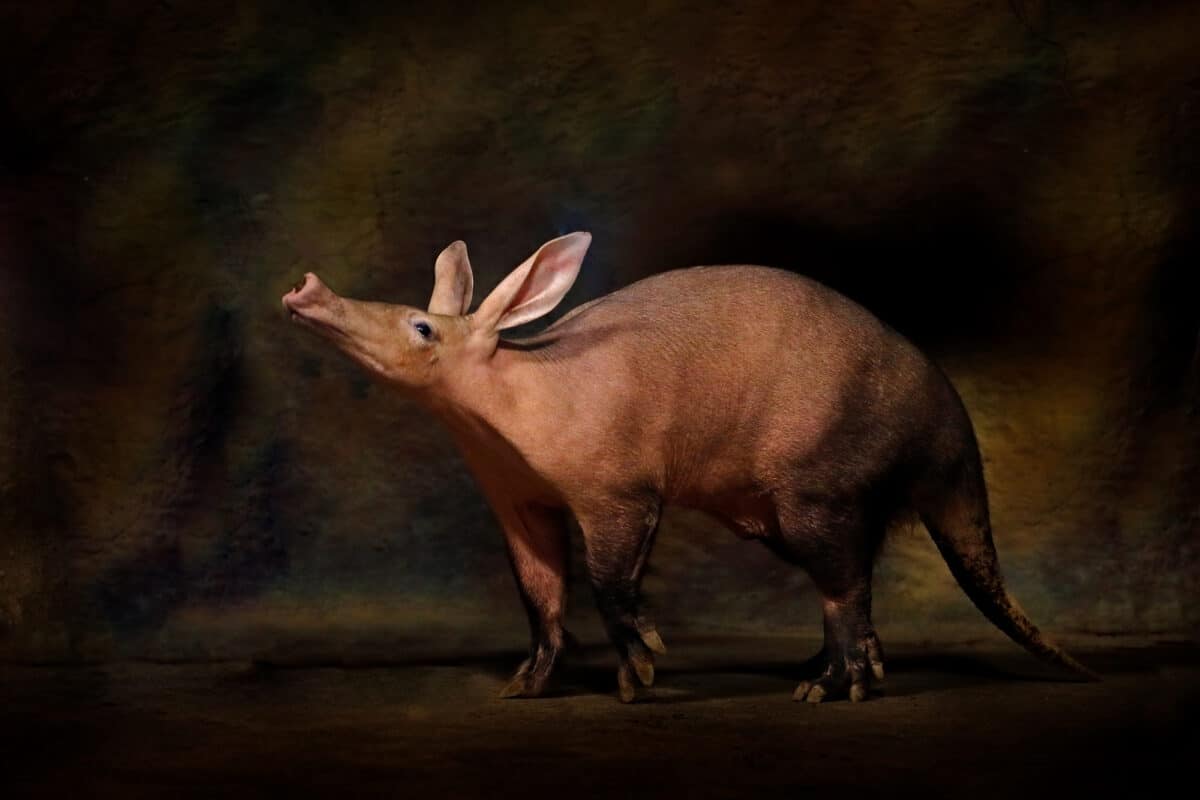
The two species have vastly different conservation and management needs.
Gorillas are currently classified as critically endangered by the International Union for Conservation of Nature (IUCN). This is the highest level of threat classification, highlighting the urgent need for conservation efforts.
Threats include habitat destruction, poaching, and disease. They urgently require protection and conservation measures to be put in place. This includes efforts such as ecotourism and education, which promote their conservancy and protection efforts.
Aardvarks, conversely, are not currently classified as endangered, but their habitat is under threat due to human activities – such as land development. Therefore, proper land management is key to ensuring their continued survival.
Although the gorillas and Aardvark may seem vastly different, their unique characteristics and features make them equally remarkable and integral to their ecosystem. Understanding their differences is key to ensuring their continued survival.
Frequently Asked Questions (FAQs)
While aardvarks and anteaters may appear similar in some ways, they are distinct animals belonging to different taxonomic families. Aardvarks are native to Africa, while Anteaters are found in Central and South America.
The Zulu (an indigenous African language) name for Aardvark is Isambane. Aardvark is an Afrikaans term that translates to “earth pig” in English.
While gorillas are not known to actively seek out or consume meat as a regular part of their diet, there have been rare instances where gorillas have been observed eating small amounts of insects or occasionally scavenging carrion.
Gorillas are exceptionally strong due to their muscular bodies and adaptations for climbing and moving through dense vegetation, enabling them to navigate their environment and establish social dominance within their groups.
Gorilla Vs. Aardvark: Closing Thoughts
While the Gorilla and Aardvark are truly amazing creatures, they each have strengths and weaknesses that set them apart. The Gorilla’s incredible strength and social nature make it a true force to be reckoned with, while the Aardvark’s unique abilities to dig tunnels and eat insects give it a special edge.
We can appreciate both of these animals for their unique contributions to the animal kingdom – it’s clear that they both have important roles to play. So the next time you’re out in nature, take a moment to appreciate the incredible diversity of life around you, including these two incredible creatures!
Thank you for reading this article about the Gorilla Vs. Aardvark! If you enjoyed this we have many more comparisons lined up for you! Take a look at the Jaguar Vs. Maned Wolf, Gerbil Vs. Hamster, or the Cheetah Vs. Tasmanian Devil.
Join our Forum for free today!


